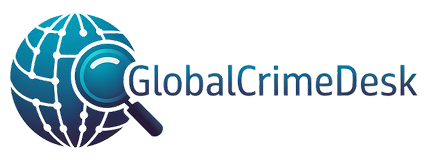World War Fee US tariffs – should they go ahead – are likely to result in price bumps for essential components and construction materials in the datacenter industry, and may even cost America its lead in the AI race as investments are paused or canceled.
A report from ABI Research, Navigating Tariff Turbulence in the Technology Sector, warns that the effects of Trump’s import taxes go beyond just hiking prices, with the unpredictability reshaping the tech sector as organizations reassess their entire supply chains and reconsider investment decisions.
“While the tariffs themselves are significant, the on-again, off-again nature of tariff policy discussions has also injected significant uncertainty into global technology markets,” Chief Research Officer Stuart Carlaw says in the report.
“This volatility underscores the challenges faced by tech firms navigating geopolitical tensions, while striving for stability and growth.”
Companies importing manufactured goods now face a baseline 10 percent tariff, while those originating from China are subject to rates as high as 145 percent, which is an issue when many tech products are assembled – or have components sourced – in China.
ABI notes the policy is supposedly part of a broader economic strategy that intends to strengthen domestic production, but it actually introduces complexities for industries such as IT that rely heavily on global supply and value chains.
Building new datacenter facilities will become more expensive due to the increased costs of construction materials like steel, aluminum, and copper, as well as electrical components.
This will hit smaller players with limited resources harder, the research firm warns. Larger corporations may double down on capex commitments, particularly those focused on AI, as these are seen as efficiency drivers and disruption presents an opportunity to gain competitive ground.
Hardware suppliers face higher costs for servers, network, and storage devices, increasing the overall price of equipment purchases for operators. The danger is this leads to deferred decision making or forces companies to absorb or pass on higher costs, which will either affect their profit margins or potentially weaken demand for their datacenter services.
In the broader context, ABI claims the tariffs are prompting a shift in supply chain dynamics, leading bit barn operators to further diversify their component sourcing strategies and possibly invest in more local manufacturing to mitigate increasing costs.
“While this may foster a sense of national self-reliance in the United States, it could result in more fragmented and less cost-efficient global supply chains and loss of comparative advantages,” says principal analyst Sebastian Wilke.
“These combined factors put pressure on datacenter operators to reevaluate both short-term and long-term strategies, affecting pricing models, investment decisions, and demand forecasts.”
Although semiconductors are currently exempt from the latest round of tariffs, the broader IT landscape still faces “considerable headwinds” due to those baseline import tariffs, with the most immediate pressure falling on AI infrastructure, according to ABI.
“Take HPE, a leading US AI server OEM – it sources components and materials from Mexico, China, Taiwan, India, Singapore, Malaysia, and beyond, while also relying on commercial operations in the Czech Republic. Imposing tariffs on these foreign-sourced components and raw materials will substantially increase the cost of manufacturing AI servers,” warns principal analyst Reece Hayden.
HPE itself highlighted this in its Q1 earnings report, in which it forecast lower revenue for Q2 because of the tariff turmoil.
Even companies like Supermicro, which emphasizes its “Made in the USA” branding, will not be immune, Hayden adds, as these still depend heavily on overseas-sourced components such as memory. The company this week warned that its upcoming quarterly results are likely to miss forecast revenue by a substantial margin.
This creates a difficult choice for server makers: absorb the costs and see profit margins shrink, or pass them on to customers through price hikes.
“In the United States, customers may have limited negotiating power and little choice other than to accept higher prices, but internationally, buyers will have greater flexibility and may be able to pivot to non-US alternatives with more cost-competitive offerings (Lenovo, Huawei),” Hayden says.
The net potential impact is a slowdown in datacenter expansion, and a subsequent reduction in demand for key components, especially high-performance semiconductors, he forecasts.
This is likely to be exacerbated by buyers that have already stockpiled key components ahead of the tariffs taking effect. Samsung just attributed record revenue to customers rushing to buy before the US raises tariffs on imports, and fellow Korean memory maker SK hynix reported a similar phenomenon in April.
ABI notes that companies like TSMC and Intel have committed to significant investments in semiconductor manufacturing on US soil, but tariffs now threaten these projects by raising the cost of construction via costlier imported raw materials and foreign equipment such as ASML’s lithography systems.
“The likely outcomes are grim: projects could be paused in hopes of riding out policy changes or canceled altogether due to diminishing Return on Investment (ROI),” Hayden says.
While a theoretical solution could involve reinvesting tariff revenue to support domestic manufacturing, “that scenario appears politically unlikely,” he adds.
The most probable outcome is therefore a long-term pullback in AI-related infrastructure investment, ABI predicts, with slower growth in server manufacturing, reduced expansion of datacenter capacity, and even a decline in America’s leading position in the global AI market.
“Increasing input costs will put pressure on IT budgets, and CIOs – already under scrutiny – will need to reassess their AI roadmaps,” Hayden warns, adding that “for some, AI will be seen as an expensive ‘nice to have,’ especially for early-stage deployments that haven’t delivered ROI.”
These projects are likely to be paused or scrapped, with ABI forecasting the net effect will be a near-term slowdown of AI adoption, as financial constraints push organizations to prioritize ROI-positive initiatives.
It would be ironic if President Trump’s tariff policies, designed to rebuild American industry and domestic manufacturing, actually led to the US losing AI supremacy to China. ®

